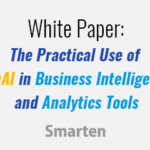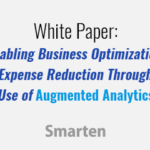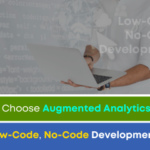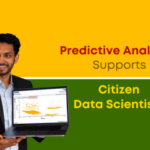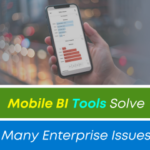
As business organizations fight for competitive advantage, funding for projects and large expenditures can fall by the wayside. In today’s competitive business market, every senior executive looks at risk, value and calculations like return on investment (ROI) and total cost of ownership (TCO) before approving a budget.
When it comes to Advanced Analytics, businesses large and small may hesitate to invest the time and effort in choosing and implementing a solution. Although Data Democratization and Data Literacy are topics of earnest discussion, the average enterprise may feel that the expense and time required will not provide enough impact to the bottom line. Nothing could be further from the truth!
The Gartner report entitled, ‘Augmented Analytics Is the Future of Data and Analytics, published on October 31, 2018, includes the following strategic assumptions:
By 2020, augmented analytics will be a dominant driver of new purchases of analytics and BI as well as data science and machine learning platforms, and of embedded analytics.
When a business chooses a self-serve advanced analytics solution, the benefits go beyond cost-effective, collaborative tools. With the right solution, business users can leverage features like Self-Serve Data Preparation, Smart Data Visualization and Assisted Predictive Modeling to produce reports, share data and make decisions using data integrated from multiple sources in an environment that allows for auto-suggestions and recommendations.
When an advanced analytics project is brought before a budget or funding committee, it is far easier to gain approval when that project is one that will provide numerous benefits across the enterprise, e.g., business users can leverage core knowledge and skill to produce and share meaningful reports and data, and data scientists and analysts can optimize time for more strategic projects that require 100% accuracy. These are just two of the benefits provided by an augmented analytics environment.
These auto-suggestion and guided recommendation tools ensure that users are not left on their own to decide how to prepare data or what techniques to use to forecast and predict. Smart visualization allows users to see data in the right way for the type of data they are analyzing so the conclusions they draw are clear and concise.
These tools encourage adoption and create power users and an environment of creativity where users can share and learn from each other and from the data and results produced. The organization will gain valuable insight into the types of reporting and data that are helpful in making decisions. The enterprise can move from error-prone spreadsheet analysis and guesswork to uniform, flexible tools that allow for comprehensive analysis.
Augmented Analytics allows for sophisticated analytics, using algorithms and analytical techniques in an easy-to-use environment that is not intimidating and does not require advanced analytical skills so every business user will add more value and become a real asset to the organization. By combining knowledge and skill in their area of expertise with simple analytical tools, each business user can contribute to the bottom line.
Because these augmented analytics tools pay such rapid and certain dividends, funding for projects is easier to secure. By implementing these advanced analytical tools, the enterprise will achieve rapid ROI and low TCO and the organization can improve data literacy and transition business users into Citizen Data Scientists.
Original Post: Proven, Rapid ROI Assures Project Funding for Augmented Analytics Projects



